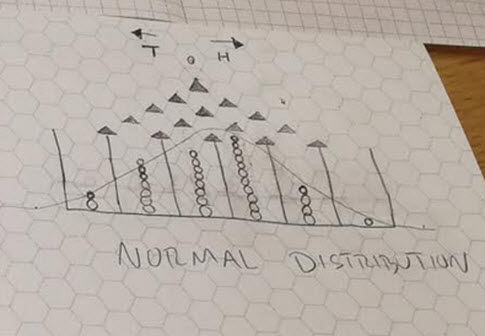At last, an affordable quincunx
EXPERIENCE THE BINOMIAL AND NORMAL DISTRIBUTIONS

The Random Walker is an inexpensive mini quincunx
Every since taking Stephen M. Stigler’s class on the history of statistics at Chicago, we’ve been wanting to get our hands on a quincunx.
A quincunx, also referred to as a Galton Board or bean machine (*) is one of these, which you may have seen in a science museum:
Balls are released from the top and bounce off of the pins. Assume the ball goes left or right with equal probability at each bound. By the time they get to the bottom you’ll see that relatively few balls experience a series of exclusively left bounces or exclusively right bounces (the tails of the distribution) and most experience some mixture of left and right bounces and end up in towards the middle. The more equal the number of left and right bounces is, the closer the ball falls to the exact center. The balls are collected into bins and the count of balls in each bin should follow the binomial distribution. In one of the coolest moves math ever did, when the number of bins is large, the binomial distribution approximates the normal distribution.
Seeing this happen is a great way to teach probability without advanced notation. You can do it on paper by flipping a coin at each bounce, like I recently did with my 9 year old:
but that’s slow going. (If you do this, I recommend starting with a real coin then transitioning to the random.org smartphone app which flips coins quickly and easily. Boredom and frustration can cause the kid to lose interest before a pattern emerges).
In the past, when we’ve checked (and we’ve checked a lot) the cost of a quincunx was high. Hundreds or thousands of dollars.
But, as chance would have it, I stumbled across one on Twitter that turned out to be cheap. It’s called The Random Walker and was only $20 when we ordered it on Amazon.
(*) We don’t really like the name bean machine.
(**) We do really like LaPlace quote in the second photo. Before the modern day belief that minds don’t reason according to the theory of probability, it was thought that the theory of probability describes how minds reason.



